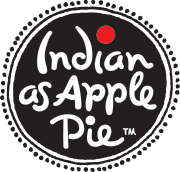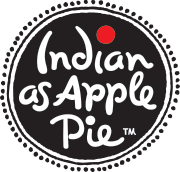May 14, 2020 3 Comments


I know you've seen the roundish green moong, which is the original form of this legume. I call it a legume because even though it looks like a lentil, it's really a bean. Why it's common to hear 'moong bean' but calling this form above a bean would be confusing because it looks flat and roundish like a lentil split in half and without the green outer skin. Whenever you see the word duhli on packaging, it indicates a legume is 'washed' - no skin and usually split.
The beauty of this form is that it cooks up super fast (40 minutes on the stove and 3 minutes in the instant pot) and because it has no skin it's very easy to digest. Also why it's the dal of choice when someone has a bellyache - our version of chicken noodle soup. We typically make it into a kitchari - cooked with rice. Unfortunately, most mainstream grocers in the U.S. have little understanding of this dal, and instead sell another legume that is actually a true lentil and orange in color - I'm sure you've seen it.
You can substitute those in the recipe below (they cook up similarly and use the same amount of water), but the taste will be slightly different - more earthy. I truly prefer this yellow moong. Once you start making it, I think you will as well. That's why I included it among our product offerings. It was important for me to tell our food story and get it right.
My father-in-law was notorious for eating moong dal every Monday night over basmati rice with a simple onion salad on the side. Yellow moong has and always will have a special place in my heart. Try it for yourself. The recipe below is for the stovetop version from scratch.
Check out our other stovetop version of this recipe, made from our Punjabi masala. Our jarred curry starter helps you eliminate the chopping - subbed for the turmeric, onion, ginger, and garlic. The process will also be slightly different - why I always like giving you distinct and separate recipes.
Makes: 5 cups
Watch this video for step-by-step instructions on how to make the recipe above. For more videos, subscribe to my YouTube channel and check out the Indian As Apple Pie Facebook page.
June 01, 2022
I was so glad to find your recipe when all others used pressure cookers and instant pots. The first time I made it I held back the chilli and liked it. The second time I put in all the chilli and oh! Fantastic. Moong dal is becoming my favourite. I can digest it and it becomes delicious with spices. What a find!
February 07, 2022
So nice to have a personal cooking lesson from a authentic cook- love your style of recalling childhood memories and agree with you tremendously !!! II’m on board as a former cook and love of Indian culture so happy I found your product at the local meat market in Kansas city MO-south side. Fairway Also, just moved here 2 years ago from Chicago! Really appreciate you
Respectfully, Valerie Reid
PS I’m sure you have read some of Peter Singers stuff-Animal Liberation- he’s been saying this for years-Bio-Ethics professor from Princeton
Comments will be approved before showing up.


david
January 21, 2025
Yeah I remember that in Indonesia, the squat toilets were way smarter than Western toilets. Also it was easy to take showers several times a day because they had these big gorgeous tile cisterns and you’d just use a big scoop and dump the water on your head.
btw I made this dal and I learned a lot, thank-you. It was delicious, although I didn’t have all the ingredients (but I learned the things I should be buying. Also how to pronounce things. This must have been during early covid…
By the way, instead of using vegetable oils we can use ghee, right?
———
Indian As Apple Pie replied:
Hello! Thank you so much for the feedback!! Love all the color. And yes! Use ghee. There had been a movement towards oils from ghee. I personally am shifting back to ghee and using oils like mustard seed, avocado, and even some olive oils rather than seed oils. It’s a learning experience, indeed. You can use coconut oil, but it would not work as well for a North Indian Punjabi profile. Enjoy! ________________________________